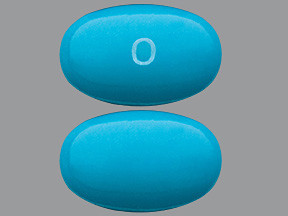CALCIFEDIOL - ORAL
PHONETIC PRONUNCIATION: (KAL-sif-e-DYE-ol)
COMMON BRAND NAME(S): Rayaldee
GENERIC NAME(S): calcifediol
Uses
USES: This medication is used to treat people with serious kidney disease whose bodies make too much of a certain natural substance (parathyroid hormone-PTH). High amounts of PTH can affect other minerals in the body (such as calcium, phosphorus) that are needed for strong bones. Calcifediol belongs to a class of drugs known as vitamin D analogs. It works by decreasing PTH and increasing calcium and phosphorus in the body.
How to use CALCIFEDIOL - ORAL
HOW TO USE: Take this medication by mouth as directed by your doctor, usually once daily at bedtime. Swallow the capsules whole. Do not crush or chew the capsules. Doing so can release all of the drug at once, increasing the risk of side effects. The dosage is based on your medical condition and response to treatment. To reduce your risk of side effects, your doctor may direct you to start this medication at a low dose and gradually increase your dose. Follow your doctor's instructions carefully. Take this medication regularly to get the most benefit from it. To help you remember, take it at the same time each day. If your doctor has told you to follow a special diet (such as a diet high in calcium), it is very important to follow the diet to get the most benefit from this medication and to prevent serious side effects. Do not take other vitamins/supplements unless directed by your doctor.
Side Effects
Precautions
Interactions
Overdose
Images
Reviews
Faq for CALCIFEDIOL - ORAL
Calcifediol is a form of vitamin D that is used to treat conditions caused by a deficiency in vitamin D.
Calcifediol is converted by the body into its active form, known as calcitriol. Calcitriol helps the body absorb and utilize calcium and phosphorus, which are essential for healthy bones and teeth.
Calcifediol is primarily used to treat conditions caused by a deficiency in vitamin D, such as rickets, osteomalacia, and hypoparathyroidism. It may also be used in certain cases of inherited vitamin D metabolism disorders.
Calcifediol is usually taken orally as a tablet or capsule, with or without food. The dosage and duration of treatment will depend on the specific condition being treated and the individual's response to the medication.
Common side effects of Calcifediol may include headache, dizziness, weakness, nausea, vomiting, constipation, increased thirst, and frequent urination. Rare but serious side effects may include allergic reactions, high blood calcium levels, and kidney stones.
Yes, Calcifediol may interact with certain medications, including corticosteroids, antacids containing magnesium, digoxin, and certain antibiotics. It is important to inform your healthcare provider about all the medications you are taking to avoid potential interactions.
Pregnant women should only take Calcifediol if specifically recommended by their healthcare provider. It is important to discuss the potential risks and benefits before using this medication during pregnancy.
Calcifediol may be used by breastfeeding women, but it is important to consult with a healthcare provider to determine the appropriate dosage and potential risks to the nursing infant.
The effects of Calcifediol may take several weeks to become noticeable. It is important to follow the prescribed dosage and treatment duration as directed by your healthcare provider.
Disclaimer
IMPORTANT: HOW TO USE THIS INFORMATION: This is a summary and does NOT have all possible information about this product. This information does not assure that this product is safe, effective, or appropriate for you. This information is not individual medical advice and does not substitute for the advice of your health care professional. Always ask your health care professional for complete information about this product and your specific health needs.

No Reviews Yet